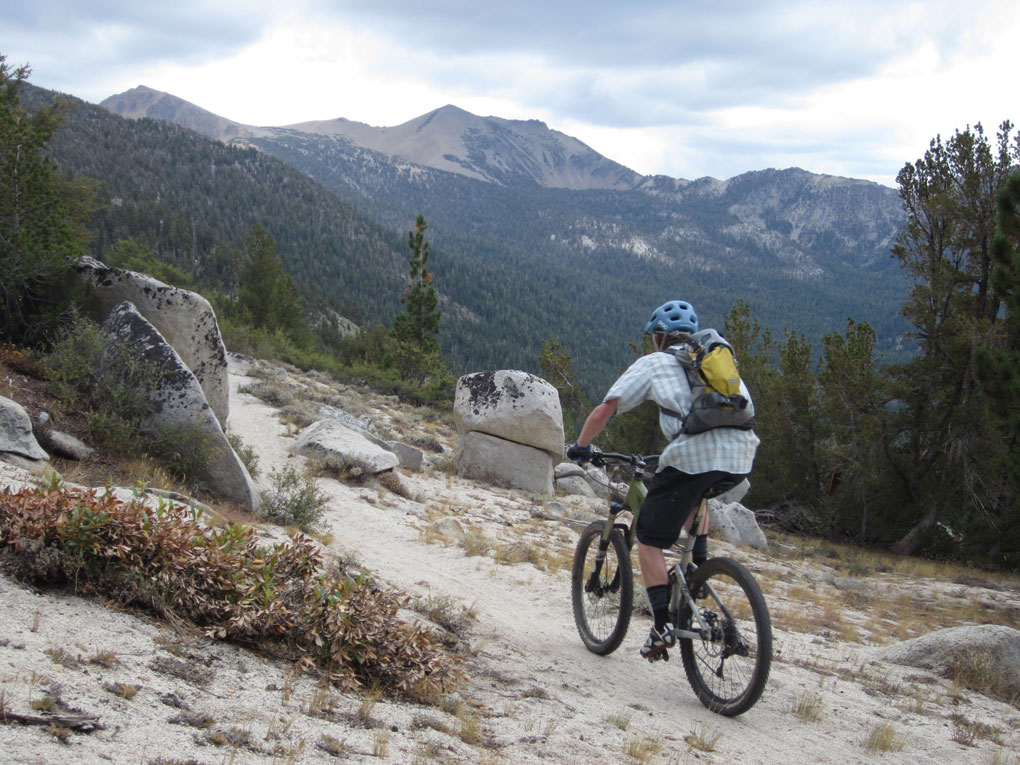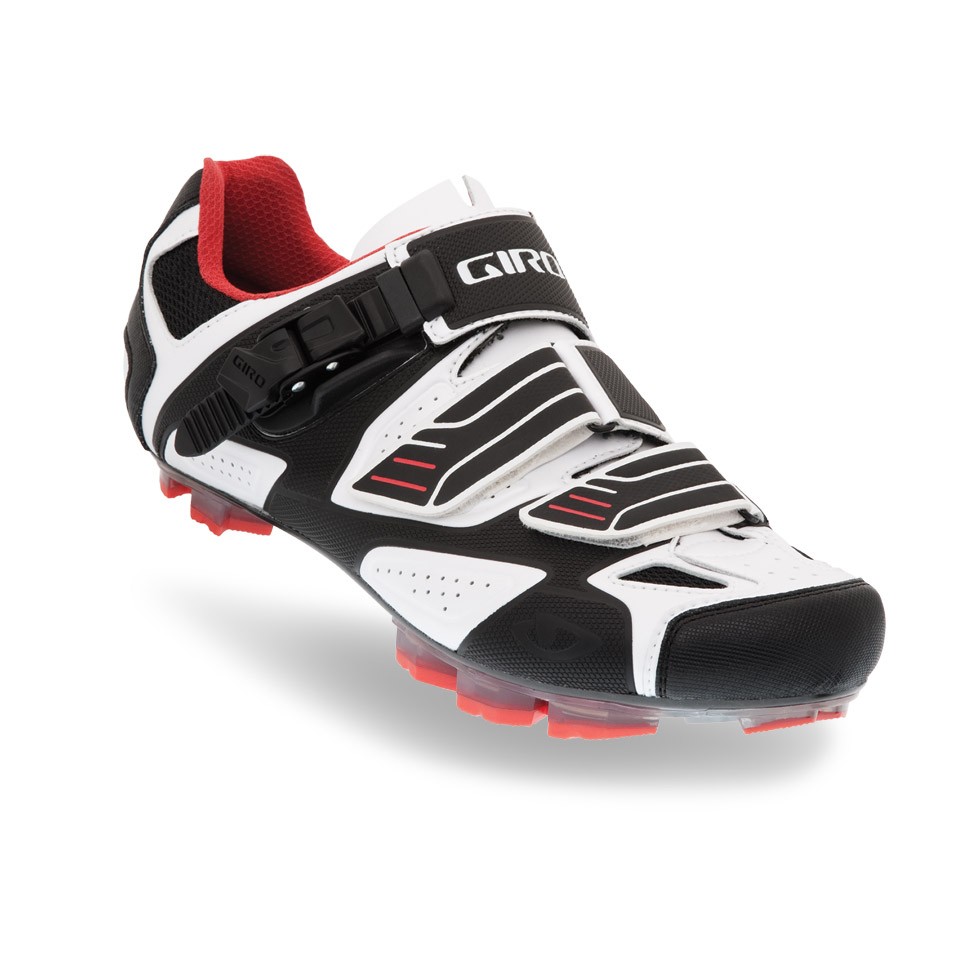Weight: 355 grams per shoe (size 42)
Size tested: 43
Features:
- Teijin lightweight microfiber upper
- Welded scuff guards
- Strong and secure ratcheting buckle closure (replaceable)
- Offset “D-ring” at mid-foot strap
- Easton EC90 unidirectional carbon outsole
- High traction lugged outsole
- Mid-foot scuff guard
- SuperNatural Fit Kit footbed with adjustable arch support system and X-Static anti-microbial fiber
Reviewer’s Feet: Street shoe size 10. Very boney, medium-width feet with numerous knobs (sixth toes, heel spurs) from the last 15 years of skiing way too much in double downsized boots.
Duration of test: 2 months, 5-8 hours a week
Location of test: Lake Tahoe, CA
Conditions tested in: Mostly dry, hot, dusty. Some damp, packed, post-rain dirt. Ranging from smooth rolling to steep rocky singletrack.
MSRP: $290
Giro has been known primarily as a helmet company, but for the past couple of years they have been producing a full line of mountain and road cycling shoes. They currently offer 13 models, with the Code being the top-of-the-line men’s shoe geared toward hardcore trail riders and XC racers.
With an MSRP of $290, the Code definitely does not come cheap. As a former owner of some similarly priced Sidi shoes, I know that sometimes, you get what you pay for and that spending lots of money for shoes can totally be worth it. (My one pair of Sidis lasted five seasons). By the beginning of this summer, my most recent shoes, a four-year-old pair of Specialized BG Pro Carbons, were falling apart, so I decided to pull the trigger on a pair of Codes to see for myself whether they are worth the hefty price tag.
The Fit
I’ve always worn size 43 mountain bike shoes, so I ordered the Code in that size without ever having tried them on. When my shoes arrived, I stuffed my feet into them and was surprised by how small they felt—almost like putting my feet into a pair of double downsized ski boots for the first time of the season. My toes were scrunched, and all the knobs on my feet (sixth toes, heel spurs, etc.) were yelling at me within minutes. Because shoes of this style generally break in pretty significantly, however, I decided to give them a shot rather than send them back.
Needless to say, my first ride in the Code wasn’t the most comfortable ride of the year.
I attached some Shimano cleats, put on the thinnest socks I own, and squeezed my feet into the Codes. I was absolutely squished into them, and it felt like I was wearing really stiff, painful, ballet shoes. I backed off all the straps and wiggled my feet around as much as I could while I was riding, but the top of the tongue was causing irritation on the tendons at the top of my feet, and my heel spurs were getting sore. I couldn’t drop the thought that I had a size too small and now that you’ve ridden in them you won’t be able to return them, idiot!
But I gave them a couple more days to see if that first ride tightness would pass. Thankfully, it did.

The second ride started more comfortably than the first, and by the third ride I didn’t even notice any excessive tightness. The leather-esque Teijin microfiber uppers stretched around all the bumps, knobs, and contours of my feet for a fit that, for lack of a better term, is like a glove. In literally three rides, the shoes had taken the shape of my feet.
Fast-forward two months, and the Code is probably the most comfortable shoe that I’ve ever used.
Footbeds, Arch Support
Much of this comfort can also be attributed to Giro’s Supernatural Fit Kit footbed, a system that allows the user to change between three different adjustable arch support heights. The color-coded inserts simply Velcro into place underneath the footbed to provide the user with low, medium, or high arch support.
I started with the medium thickness but changed to high after several weeks just for the sake of “testing,” and to see if I noticed any difference. Turns out, I prefer the higher support. Having the ability to customize my arch support has definitely made these shoes fit and feel better than any other shoes I’ve used before. In my opinion, there is no need to buy an aftermarket footbed with these shoes, and I’ve found the stock footbed to be better than most aftermarket models.

